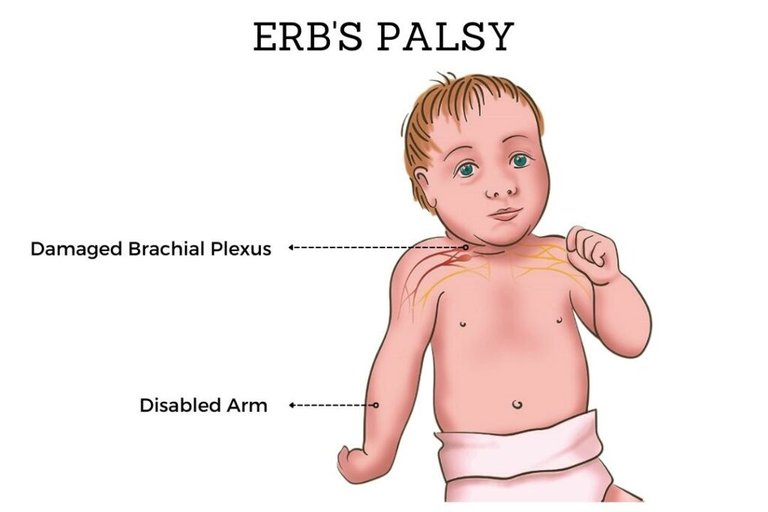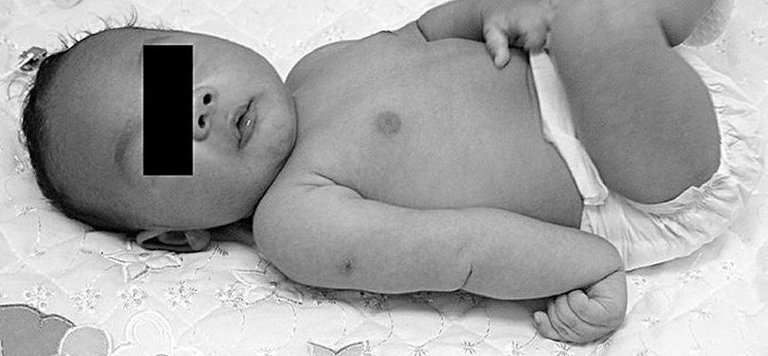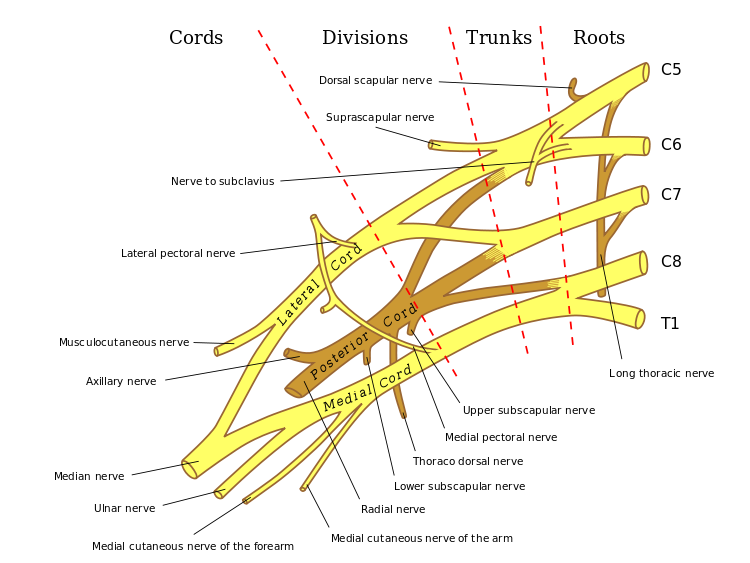Paediatric Physiotherapy - Erbs Palsy
Erb's Palsy- We would be looking at what erbs palsy in simple and clear terms
A quick paediatric case study on erbs palsy
Case Study:

Alex is currently a 3-year-old boy. When Alex was born, something happened that made one of his arms feel weak and not work well. His parents noticed this a few months after being discharged from the hospital after his birth. They reported back to the hospital and after a thorough examination, the medical team realized that Alex was facing some serious challenges with the use of his right arm. they confirmed that he must have sustained an injury during childbirth to the upper region of his brachial plexus (a bundle of nerves supplying the arm, which makes us able to perform various functions, that basically a human arm would perform ) They concluded that he would need Physiotherapy treatment sessions as soon as possible to regain the ability to use his hand effectively.
Now from the little details above, it is clear that Alex faced some challenges with the use of his right arm, but what exactly are these challenges
Challenges:
- He couldn't use one of his right arm like other babies of his age
- He was always resting his arm, and didn't move it, almost like the arm was lifeless
- The arm usually dangled whenever his mom carried him. She always had to adjust it
- He hardly moved the right arm even when his mom induced slight pain
- The arm in question mostly hangs by the side and it is rotated inwards unlike the left
- He never tried grabbing hold of something with this hand, felt like he was lacking the grasp reflex; now the grasp reflex is a kind of hand reflex found in newborn babies that causes them to basically hold on to things once it touches their palm. This was missing in Alex. A sign that something was wrong
Now from all indication, from the challenges faced by Alex together with examinations done showed that his right arm was suffering from Erbs palsy
Now what is erbs palsy ?
Erb's Palsy, also known as Erb–Duchenne palsy, is a type of injury that happens during childbirth. It occurs when the brachial plexus, which is a bundle of nerves in the neck and shoulder area, gets damaged, specifically the upper part of it. This injury can be caused by stretching, tearing, or even pulling the nerves from the spinal cord. It's the most common type of injury related to childbirth, happening in about 50-60% of cases.
The main nerves affected are called C5 and C6, although in some cases, C7 can be involved too. These nerves play a crucial role in controlling movement and sensation in the upper arm. Depending on how severe the injury is, Erb's Palsy might go away on its own over time, or it may require physical therapy(Physiotherapy) or even surgery to improve.
Anatomy Matters
To understand Erb's Palsy, it's important to know a bit about the anatomy. The brachial plexus is a network of nerves, and Erb's Palsy mostly affects the C5 and C6 nerves. There's a specific point in the brachial plexus called Erb's point, which is about 2-3cm above the collarbone. The affected nerves include the axillary nerve, musculocutaneous nerve, and suprascapular nerve.
The axillary nerve controls the shoulder, teres minor, and deltoid muscles, as well as the skin on the upper arm.
The musculocutaneous nerve controls the muscles in the front of the arm and the skin on the outer part of the forearm.
The suprascapular nerve controls the supraspinatus and infraspinatus muscles and the shoulder joint.
Now, How Common Is It? (Epidemiology)
Erb's Palsy is not extremely common, with about 0.8-1 out of 1,000 births in the U.S. being affected by some type of brachial plexus birth palsy. Erb's Palsy specifically accounts for around 45% of these cases, and in 20% of instances, there can be damage to the C7 nerve as well.
What Causes It?
The most common cause of Erb's Palsy is when too much force is applied during childbirth. This can happen if the baby's head and neck are pulled in different directions, which is often associated with a condition called shoulder dystocia. It can also occur if there's too much pressure on the baby's raised arm during a breech delivery. Essentially, there are two main forces at play during labor: the natural pushing force from the uterus and the pulling force applied by the doctor.
Factors that increase the risk of Erb's Palsy include shoulder dystocia, a large baby (fetal macrosomia), maternal obesity, gestational diabetes, a long second stage of labor (more than 60 minutes), and a breech presentation.
How Does It Look?
One telltale sign of Erb's Palsy is what's known as the "Waiter's tip deformity."
A quick description of waiters tip deformity

.src
The above image give a visual description of waiters tip position
The waiter's tip position is when the arm hangs down by the side, rotates inward, the forearm is straightened and turned down, and the wrist is bent. There's also a loss of feeling in the outer part of the forearm. This condition makes it difficuilt to lift the arm, flex the elbow, or rotate the fore-arm.
Diagnosis
Doctors diagnose Erb's Palsy by taking a close look at the baby's history and conducting a thorough physical examination. They pay special attention to nerve function and reflexes. Sometimes, they also check for the presence of a cervical rib, as this can be a risk factor. Additional tests might include chest X-rays to rule out fractures, MRI scans of the shoulder to see if there's any dislocation, and EMG (electromyography) or nerve conduction studies to check for nerve damage.
What Can Be Done?
The good news is that many cases of Erb's Palsy can get better on their own or with some help. In fact, 80-90% of children with this condition will regain normal or near-normal function. For those the remaining .
Treatment options? This includes majorly early physiotherapy and, in more severe cases, surgery.
Physiotherapy is an extremely crucial part of treatment, and it's main aim is preventing
- stiffness
- Improving function and
- maintaining muscle strength and movement.
Parents are often taught how to help their child with exercises and proper handling. Surgery may be considered if there's no improvement within the first 6 months. Surgical options may include
- Nerve transplants
- Muscle releases or
- Tendon transfers.
Looking Ahead The outlook for Erb's Palsy depends on the severity of the injury and how quickly it's treated. Milder cases may resolve within a few months, and starting treatment within the first four weeks of life can lead to nearly 100% recovery. It's important to act early, as the timing of treatment significantly affects the outcome.
In some cases, individuals with Erb's Palsy have found ways to adapt and lead fulfilling lives. There are inspiring stories of peoples who have overcome this condition and achieved success in various field.
In conclusion, Erb's Palsy is simply one of those birth-related injury that affects the nerves that are controlling the arms and shoulder. It's most often caused by complications during childbirth, but with the right treatment and early intervention such as physiotherapy, many children can recover and lead normal, active lives.
Thanks for reading, best regards @sam9999
References

Congratulations @sam9999! You have completed the following achievement on the Hive blockchain And have been rewarded with New badge(s)
Your next target is to reach 31000 upvotes.
You can view your badges on your board and compare yourself to others in the Ranking
If you no longer want to receive notifications, reply to this comment with the word
STOPTo support your work, I also upvoted your post!
Thanks for your contribution to the STEMsocial community. Feel free to join us on discord to get to know the rest of us!
Please consider delegating to the @stemsocial account (85% of the curation rewards are returned).
You may also include @stemsocial as a beneficiary of the rewards of this post to get a stronger support.